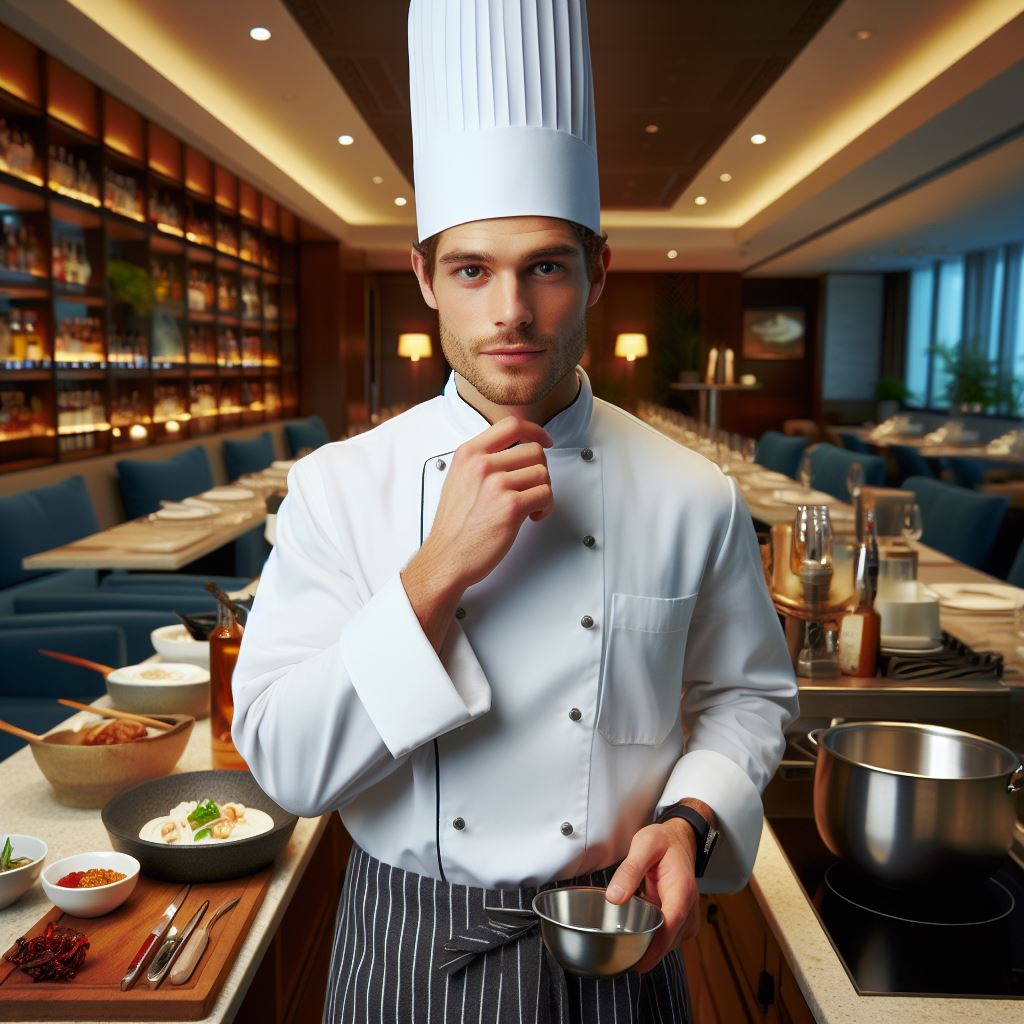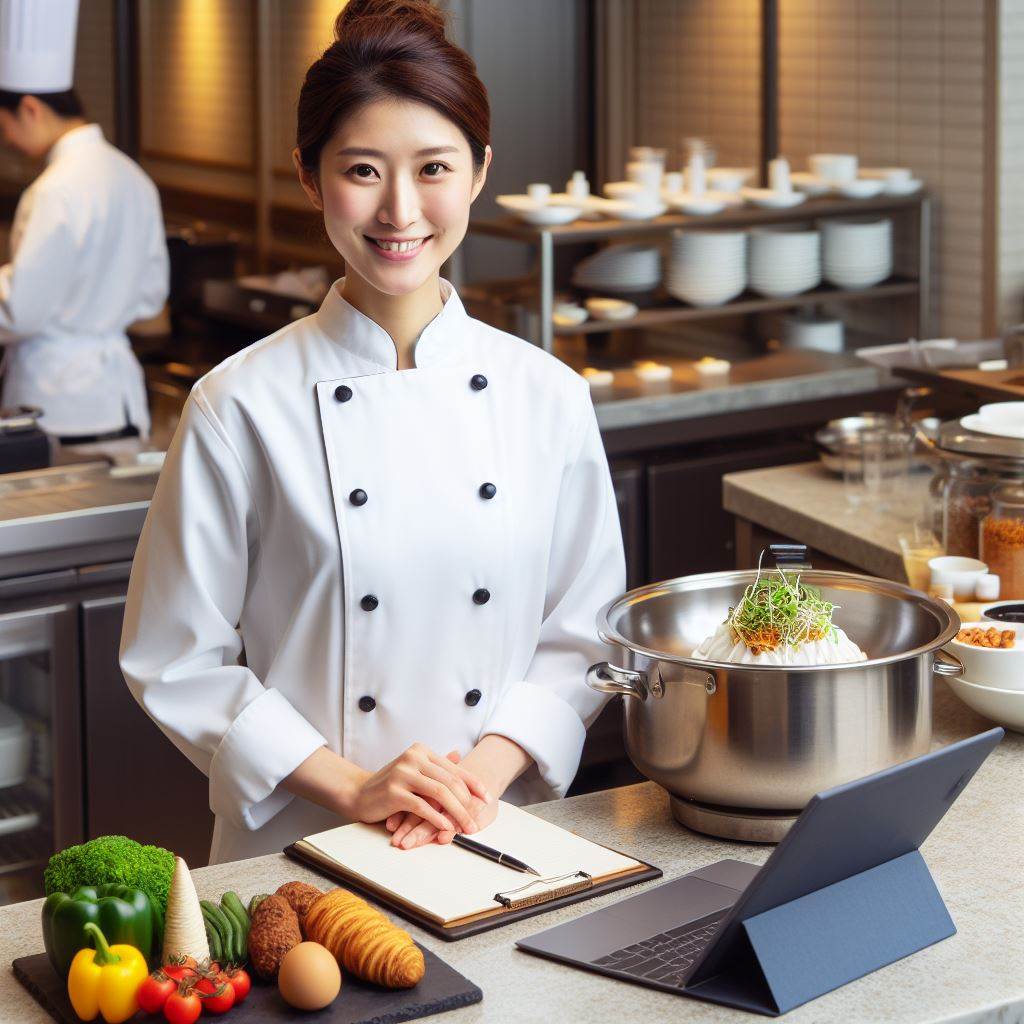Introduction
New Zealand, with its breathtaking landscapes, is a haven for food enthusiasts.
The country’s reputation for fresh and sustainable produce is a testament to its vibrant culinary scene.
With a perfect blend of traditional Maori cuisine and international influences, New Zealand offers a gastronomic experience like no other.
Tourism plays a significant role in promoting and supporting the growth of New Zealand’s culinary scene.
As visitors flock to this island nation, they are enticed by the prospect of indulging in local delicacies and experiencing the authentic flavors of the region.
The culinary experiences offered to tourists have become a notable attraction, becoming an integral part of the overall tourism experience.
One of the remarkable aspects of New Zealand’s culinary scene is its emphasis on local and seasonal ingredients.
Restaurants and cafes pride themselves on sourcing ingredients from nearby farms and artisanal producers, ensuring that the flavors are both fresh and sustainable.
This dedication to using local produce not only supports the economy but also showcases the diverse range of flavors and culinary traditions found within the country.
Furthermore, New Zealand’s culinary scene showcases its unique fusion of traditional Maori cooking techniques with contemporary international influences.
Visitors have the opportunity to indulge in traditional hangi feasts, where food is cooked in an underground pit, as well as experiment with fusion dishes that blend flavors from different culinary traditions.
In essence, New Zealand’s culinary scene thrives as a result of its connection to the tourism industry.
Offering a wide variety of flavors and experiences, it has become a key attraction for visitors, providing a gateway to the country’s rich culinary heritage.
From traditional Maori cuisine to innovative fusion dishes, New Zealand’s culinary scene promises a taste adventure like no other.
Overview of New Zealand’s Cuisine
Brief history of culinary traditions in New Zealand
New Zealand’s cuisine is a melting pot of flavors and culinary traditions from various cultures.
Personalized Career Consulting
Unlock your potential with expert career advice tailored to your goals. Get personalized guidance and actionable steps toward your dream career in New Zealand.
Get StartedA brief look at the history of culinary traditions in New Zealand reveals how diverse influences shape the country’s food scene.
European settlers brought with them their cooking techniques, incorporating locally available ingredients into their traditional recipes.
Meat, especially lamb and beef, became central to the New Zealand culinary identity.
Introduction to Māori cuisine and its influence on modern New Zealand dishes
However, New Zealand’s food culture isn’t solely shaped by European influences.
Māori cuisine plays an essential role in the country’s culinary landscape.
The Māori people, the indigenous Polynesian population of New Zealand, have a rich food heritage that dates back centuries.
Traditional Māori cooking methods, such as hangi (earth oven) and boil-up (stews), are still practiced today.
Māori delicacies like kai moana (seafood), including kina (sea urchin) and paua (abalone), showcase the unique flavors of the region.
The use of indigenous ingredients like kūmara (sweet potato) and harakeke (flax) further distinguishes Māori cuisine.
Māori flavors and ingredients have greatly influenced modern New Zealand dishes, adding depth and uniqueness to the culinary offerings.
Chefs and cooks across the country draw inspiration from traditional Māori cooking techniques and ingredients, incorporating them into contemporary recipes.
Traditional dishes and ingredients popular in New Zealand
In addition to Māori cuisine, several dishes and ingredients have become emblematic of New Zealand’s food identity.
Pavlova, a meringue-based dessert topped with fresh fruits, is widely enjoyed and fiercely debated over its origins with Australia.
Hāngī, a Māori cooking method involving slow-cooking food in an earth oven, offers a delicious and immersive cultural experience for visitors.
Transform Your Career with a Professional CV and Cover Letter
Stand out to employers with an ATS-optimized resume and tailored cover letter designed to match your dream role. Let us craft your job application materials for success!
Get StartedNew Zealand green-lipped mussels, known for their large size and sweet flavor, are a delicacy often praised by seafood enthusiasts.
Whitebait fritters, made from tiny fish that migrate upstream, are another popular choice among locals and tourists alike.
Hoki, a white fish found in New Zealand’s waters, is commonly used in the classic Kiwi dish, fish and chips.
And who could resist the delightful lamingtons, sponge cake squares coated in chocolate and desiccated coconut, often enjoyed as a sweet indulgence.
In fact, New Zealand’s culinary scene presents a fascinating fusion of traditions and influences.
From the early European settlers and their adaptation of local ingredients to the esteemed Māori cuisine, the country’s culinary landscape is defined by a diverse range of flavors and techniques.
Exploring the traditional dishes and ingredients popular in New Zealand is an integral part of any culinary adventure in this stunning country.
Read: The Life of a Chef in NZ’s Top Hotels
The Rise of Food Tourism in New Zealand
Food tourism refers to a form of tourism that revolves around experiencing and exploring the local cuisine and culinary traditions of a particular destination.
Increasing popularity of culinary tourism in New Zealand
In recent years, culinary tourism has gained immense popularity in New Zealand, attracting both domestic and international tourists.
The country’s unique blend of Maori, European, and Pacific influences has created a vibrant and diverse culinary scene.
Examples of well-known food tourism destinations in New Zealand
One of the most famous food tourism destinations in New Zealand is the Hawke’s Bay region, renowned for its wineries and gourmet food experiences.
Auckland’s diverse food culture and ethnic cuisine scene also attract food enthusiasts, offering a wide range of culinary experiences.
The spectacular Canterbury region is known for its farm-to-table experiences and vibrant farmers’ markets.
Boost Your Career with a Standout LinkedIn Profile
Attract recruiters and expand your network with a fully optimized LinkedIn profile tailored to highlight your strengths and professional goals. Let your profile open doors to new opportunities!
Get OptimizedRole of local food producers, farmers, and markets in attracting tourists
Local food producers, farmers, and markets play a crucial role in attracting tourists by showcasing the authentic flavors and produce of New Zealand.
Visitors can indulge in farm tours, interact with local farmers, and savor fresh produce straight from the source.
The Farmers’ Markets, such as the famous Wellington Farmers’ Market, offer a vibrant atmosphere where tourists can sample local delicacies and buy fresh ingredients.
In short, food tourism is booming in New Zealand, with visitors flocking to experience the country’s diverse culinary scene.
Local food producers and markets are instrumental in showcasing New Zealand’s culinary offerings, making it a must-visit destination for food enthusiasts.
Read: Cooking in NZ: A Career Overview in 2024
Traditional Māori Cuisine: A Unique Experience
Overview of traditional Māori cuisine and cultural significance
As tourists explore New Zealand’s culinary scene, experiencing traditional Māori cuisine is a must.
Māori cuisine is more than just food; it is a representation of the rich history and cultural significance of the indigenous Māori people.
Māori cuisine, or kai, is deeply connected to Māori customs and rituals, symbolizing unity and hospitality.
Through food, tourists can gain insight into the traditional practices and values of the Māori people.
Typical Māori ingredients and cooking methods
One of the key ingredients in Māori cuisine is seafood, such as fish and shellfish.
These ingredients hold a vital place in Māori culture, as they signify the relationship between the Māori and the sea.
Māori cooking methods, such as hangi and umu, play a significant role in preparing kai moana or sea delicacies.
Traditional Māori dishes that tourists can experience and enjoy
When it comes to traditional Māori dishes, hangi stands out as a must-try experience.
Hangi is a feast where food is cooked in an earth oven, imparting a unique smoky flavor to the ingredients.
Kumara, a sweet potato, is often included in hangi and is considered a staple in Māori cuisine.
Another delightful Māori culinary delight is the Rewena bread.
This bread is made using a fermented potato starter, resulting in a distinctive tangy taste and soft texture.
Both locals and tourists enjoy this expressive representation of Māori food culture.
Importance of cultural exchange and understanding for tourists through Māori food experiences
Partaking in Māori food experiences goes beyond satisfying taste buds; it allows for cultural exchange and understanding.
Sharing a meal with Māori people fosters connections and promotes meaningful dialogue about the significance of food in their culture.
By experiencing traditional Māori cuisine, tourists gain a deeper appreciation for Māori culture and its indigenous traditions.
It promotes respect and awareness while showcasing the unique customs and values of the Māori people.
Read: Healthy Eating: Tips from NZ Wellness Chefs

New Zealand Regional Delicacies
New Zealand offers a wide variety of regional cuisines that showcase the country’s diverse culinary scene.
Iconic regional dishes from different parts of the country
In the North Island, the iconic dish is the Hangi, a traditional Maori feast cooked in an earth oven.
South Island is famous for its Bluff oysters, a true delicacy enjoyed by seafood lovers.
In the Bay of Plenty, you can indulge in a delicious Kiwi classic, the Pavlova, a meringue-based dessert.
Wellington, the capital city, is known for its gourmet burgers and local craft beer.
Heading further south to Canterbury, you must try the famous lamb chops, prepared to perfection.
The abundance of fresh seafood options in coastal areas
With its vast coastline, New Zealand offers an abundance of fresh seafood options.
- Kaikoura, located on the South Island, is renowned for its delicious crayfish and seafood restaurants.
- Auckland is a seafood lover’s paradise, offering an array of fresh oysters, mussels, and fish.
- If you visit the Coromandel Peninsula, don’t miss out on their mouthwatering fish and chips.
- The Marlborough Sounds boast an array of seafood, including Green-lipped mussels and salmon.
Wine regions and their contribution to the culinary scene
New Zealand’s wine regions play a significant role in enhancing the culinary scene.
- The Marlborough region, known for its Sauvignon Blanc, offers wine tours and tastings.
- In Hawke’s Bay, you can indulge in exquisite red wines, particularly their Cabernet Sauvignon.
- Central Otago, famous for its Pinot Noir, provides a scenic backdrop for wine and food enthusiasts.
- Waiheke Island near Auckland is renowned for its boutique wineries and stunning vineyard views.
- With each region having its specialty, wine lovers will find something unique to savor throughout New Zealand.
Overall, New Zealand’s regional delicacies offer a culinary journey through the country’s diverse flavors.
From traditional hangi to fresh seafood and world-class wines, there is something to satisfy every food lover’s palate.
Read: Culinary Scholarships in NZ: Chef Dreams
Fusion Cuisine: A Blend of Cultures
Influence of multiculturalism in New Zealand’s culinary scene
- New Zealand’s diverse population contributes to a rich culinary landscape influenced by various cultures.
- The integration of different traditions and cooking techniques has given rise to fusion cuisine.
Introduction to fusion cuisine and its popularity in the country
- Fusion cuisine refers to the blending of different culinary traditions to create innovative and unique dishes.
- It has gained immense popularity in New Zealand due to its ability to showcase cultural diversity in a single plate.
Examples of successful fusion restaurants and chefs in New Zealand
- The Sugar Club, owned by renowned chef Peter Gordon, is a prime example of successful fusion cuisine.
- Sidart, led by chef Sid Sahrawat, combines Indian and European flavors, creating a fusion dining experience.
- Monsoon Poon offers a fusion of Southeast Asian, Indian, and Chinese cuisines, delighting customers.
Unique dishes that combine different cultural influences
- Kiwi tacos creatively merge Māori ingredients like kumara and rewena bread with Mexican-style fillings.
- Hāngi pizza blends the traditional Māori earth oven cooking technique with an Italian favorite.
- Korean fried chicken with poutine introduces Korean flavors to the beloved Canadian dish.
In general, New Zealand’s multiculturalism plays a significant role in shaping its culinary scene.
Fusion cuisine has become popular as it showcases the diverse cultural influences in unique and innovative ways.
Through successful fusion restaurants and talented chefs, New Zealand continues to delight locals and tourists alike.
The fusion of different cultures not only contributes to the culinary scene but also enriches the overall cultural fabric of the country.
Cooking Classes and Food Festivals for Tourists
Overview of cooking classes and workshops available for tourists
- Tourists visiting New Zealand have the opportunity to participate in cooking classes and workshops.
- These classes provide hands-on experience in preparing traditional New Zealand dishes.
- Local chefs and culinary experts guide tourists through the process of preparing these dishes.
- Participants learn about the unique ingredients and cooking techniques used in New Zealand cuisine.
- Cooking classes are available for all skill levels, whether beginners or experienced home cooks.
- These classes not only teach tourists about New Zealand food but also foster cultural exchange.
Popular food festivals and events in New Zealand
- New Zealand hosts a variety of food festivals and events throughout the year.
- The Hokitika Wildfoods Festival is a highlight that showcases the country’s unique and wild culinary offerings.
- The Marlborough Wine and Food Festival is a renowned event that celebrates the region’s famous wines and gourmet food.
- The Wellington Chocolate Festival indulges chocolate lovers with its delicious treats and workshops.
- The Auckland Seafood Festival is a seafood lover’s paradise, featuring the freshest catch from local waters.
- These festivals allow tourists to sample a wide range of New Zealand’s culinary delights in one place.
Importance of these experiences in promoting New Zealand’s culinary tourism
- Cooking classes and food festivals play a crucial role in promoting New Zealand’s culinary tourism.
- Tourists who participate in cooking classes gain a deeper appreciation for the country’s food culture.
- They learn about the local ingredients and traditional cooking techniques unique to New Zealand.
- By immersing themselves in these culinary experiences, tourists become ambassadors for New Zealand cuisine.
- The exposure tourists receive during food festivals helps spread the word about the country’s culinary scene.
- Positive reviews and word-of-mouth recommendations from participants contribute to the growth of culinary tourism.
- These experiences also support local businesses, such as restaurants, farms, and food producers.
In a nutshell, cooking classes and food festivals provide tourists with an immersive and educational experience in New Zealand’s culinary scene.
The hands-on nature of the classes allows participants to learn about traditional recipes and cooking techniques while fostering cultural exchange.
Food festivals, on the other hand, offer a variety of culinary delights from across the country in one location, promoting the diverse and unique flavors of New Zealand.
Both these experiences play a vital role in promoting culinary tourism and supporting local businesses.
Conclusion
Recap of the main points covered in the blog post
Throughout this blog post, we have explored the vibrant culinary scene in New Zealand and its connection to tourism.
We discussed the diverse range of culinary experiences available in the country, from traditional Maori dishes to contemporary fusion cuisine.
We also highlighted the importance of locally sourced ingredients and the farm-to-table movement in New Zealand’s culinary practices.
Restatement of the connection between tourism and the culinary scene in New Zealand
It is evident that tourism and the culinary scene in New Zealand are intricately linked.
The country’s reputation for exceptional food and wine has attracted a growing number of tourists seeking unique gastronomic experiences.
The thriving culinary scene has become a significant draw for visitors, contributing to the overall tourism industry’s success.
Final thoughts or call to action for readers to explore New Zealand’s culinary delights
As we conclude this blog post, we encourage readers to venture into the culinary delights of New Zealand.
Indulge in the diverse flavors, indulge in wine tasting tours, visit farmers’ markets, and engage with local food producers.
By exploring New Zealand’s culinary scene, you not only support local businesses but also experience a cultural journey through food.
So pack your bags and embark on a culinary adventure of a lifetime in New Zealand!




